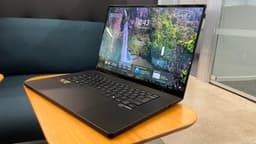Home / Technology / Gaming Laptops Evolve: From Bulky Bricks to Sleek Powerhouses
Gaming Laptops Evolve: From Bulky Bricks to Sleek Powerhouses
17 Nov
Summary
- Gaming laptops now match desktop power with high framerates and ray tracing
- Modular and customizable laptops offer flexibility, but some struggle with gaming performance
- Variety of options at different price points, from budget to premium

In the past few years, gaming laptops have undergone a remarkable transformation, transitioning from bulky, unattractive devices to sleek, powerful machines that can match the performance of desktop PCs. These laptops now offer a range of features that cater to the needs of modern gamers, including high framerates, real-time ray tracing, and the ability to connect to large screens for an immersive gaming experience.
One of the biggest advantages of gaming laptops is their flexibility. Users no longer need to worry about being tethered to a single location, as these machines offer the portability to game on the go. Many models now come equipped with advanced features like RGB-lit keyboards, efficient cooling systems, and high-speed SSD storage to keep up with the demands of the latest AAA titles, eSports, and even virtual reality gaming.
However, the gaming laptop market is not without its challenges. The recent review of the Framework Laptop 16 highlighted the difficulty in balancing modular customizability and gaming performance, as its actual gaming capabilities were deemed "middling" for its high price. On a more positive note, the Stealth Studio 14 from MSI has been praised for its improved speed and design compared to previous models.
As with any technology purchase, the price point is a crucial factor in the gaming laptop buying journey. While budget-friendly options under $1,000 may sacrifice some power and build quality, they can still handle the majority of modern games at 1080p and 60 frames per second. For those willing to spend around $1,500, the mid-range market offers excellent value, with improved graphics, RAM, and storage to handle even the most demanding titles.
For the high-end enthusiasts, premium options like the Razer Blade and Alienware's customizable Area 51m can cost upwards of $2,000 or even $4,700, respectively. These top-tier laptops boast the latest hardware, impeccable build quality, and sleek designs, but they may be overkill for the average gamer.
As the gaming laptop landscape continues to evolve, consumers have more choices than ever before, catering to a wide range of budgets and performance needs. Whether you're seeking a budget-friendly workhorse or a cutting-edge, future-proof machine, the current market offers a diverse selection of options to suit every gamer's preferences.




